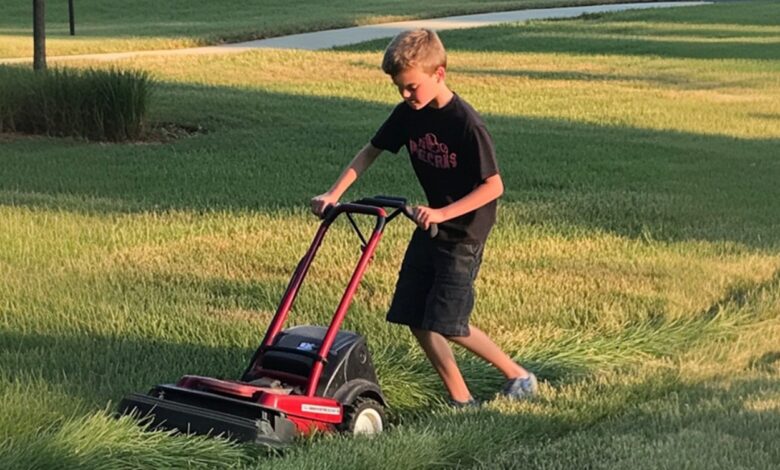
A profound sense of astonishment gripped onlookers as an extraordinary sight emerged from the depths of the sea along the Romanian coast. The tranquil waters revealed a wounded dolphin, its plight capturing the attention of unsuspecting tourists.
Efforts were made to rescue the distressed marine mammal, but regrettably, its fate was sealed. Experts identified the creature as a member of the Delphinus Delphis species, a species known to inhabit the Black Sea.
Upon closer examination, the dolphin displayed multiple wounds on its body, likely inflicted by the ensnaring nets of fishermen. The Black Sea is home to three distinct species of marine mammals: the Common dolphin (Delphinus delphis ponticus), the Bottlenose dolphin (Tursiops truncatus ponticus), and the Harbor porpoise (Phocoena phocoena relicta).
Diverging in morpho-anatomical features and primary food sources, these species exhibit unique characteristics. The Bottlenose dolphin and Harbor porpoise primarily feed on fish and benthic organisms, while the Common dolphin’s diet encompasses fish and other organisms found within the water column.
Each species displays a preference for specific habitats, with the first two favoring coastal areas and the Common dolphin being commonly encountered in offshore zones. The Common dolphin is characterized by a bluish-gray to brown color on its dorsal side, featuring a distinct V-shaped lateral boundary that is remarkably light. A pigmented band, varying in darkness, connects the lower jaw to the insertion of the pectoral fins. The dorsal, pectoral, and caudal fins range from black to gray-brown.
Newborns measure around 0.80-0.95 m, with adults in the Black Sea not exceeding 2 m (males – 177 cm, females – 159 cm). Highly sensitive to chemical and acoustic pollution, they exhibit social behaviors, forming groups of 10-15 individuals, as well as pairs or isolated individuals. With rapid swimming capabilities, reaching speeds of approximately 50 km/h, they engage in short-duration dives and frequent surface breathing at intervals of 1/3 seconds. Their habitat extends to depths of up to 70 meters.
Sexual maturity is reached at the age of 2 years, and the gestation period is 10 months, with weaning occurring at 4 months. Displaying highly developed maternal instincts, their lifespan is estimated to be 25-30 years. Their primary diet comprises small pelagic fish such as sprat, anchovy, and gobies, along with crustaceans.
Additionally, their stomachs often contain other species like horse mackerel, cod, bluefish, red mullet, sea bass, shrimp, and mollusks. The daily food intake for these remarkable creatures is approximately 10 kg.
My Neighbor Requested My 12-Year-Old Son to Mow Her Lawn, Then Declined to Pay – She Wasn’t Prepared for My Retaliation

Then one day, Ethan came home, sweat dripping from his forehead. His shirt was soaked, and he looked like he’d been running for hours.
“Ethan, what happened?” I asked, walking over to him as he plopped down on the couch.
“Mrs. Johnson asked me to mow her lawn,” he panted. “She said she’d pay me twenty bucks.”
I glanced out the window at Mrs. Johnson’s yard. It was huge, easily the biggest in the neighborhood. Ethan had mowed the entire thing. It looked perfect, lines neat and clean.
“Two days,” Ethan said, wiping his face with his shirt. “It took me two whole days. But she said she’d pay me when I was done.”
I smiled at him, proud. Ethan was a good kid, always looking to help out. He’d been saving up for weeks to buy a food processor for his grandma’s birthday. The twenty dollars would help him get a little closer.
“Did she pay you yet?” I asked, still looking out the window.
“No, but I’m sure she will,” Ethan said, his voice hopeful.
I nodded. Mrs. Johnson might be distant, but stiffing a kid out of twenty bucks? Even she wouldn’t do that. Or so I thought.
A few days passed, and I noticed Ethan was quieter than usual. He wasn’t his usual cheerful self, and it worried me.
“What’s wrong, honey?” I asked one evening as he sat by the window, staring at Mrs. Johnson’s house.
“She hasn’t paid me yet,” he said softly.
I frowned. “Well, have you asked her?”
Ethan nodded. “Yeah, I went over yesterday, but she told me she was busy and to come back later. So I went again today, and she told me… she told me to get lost.”
“What?” I gasped, shocked. “What do you mean ‘get lost’?”
Ethan looked down at his hands, his voice shaking just a little. “She said I should be grateful for the lesson I learned from mowing her lawn. That learning to work hard was the real payment. She said I didn’t need the money.”
My heart dropped, and my anger rose. This woman had tricked my son into doing two days of hard work and then refused to pay him. How dare she?
I clenched my fists, trying to stay calm for his sake, but inside I was boiling. “Don’t worry about it, honey. I’ll take care of it.”
Ethan gave me a small, trusting smile. But inside, I was already planning what I’d do next. Mrs. Johnson might think she was teaching my son a lesson, but she was about to learn one herself.
I sat on the porch the next morning, watching Mrs. Johnson pull out of her driveway, as polished as ever. The decision had been brewing inside me for days, and now, I felt no hesitation.
My son deserved justice, and if Mrs. Johnson wasn’t going to do the right thing, then I’d make sure she learned a lesson of her own. I got to making calls and leaving voice messages.
Around an hour later, my phone buzzed in my pocket. It was Mark, my old friend from high school, who now ran a small landscaping business. I explained the situation in a quick, hushed tone.
“So, you want me to… trim her hedges into weird shapes?” he chuckled on the other end of the line.
Mrs. Johnson took immense pride in her yard, especially her hedges. Every Saturday morning, without fail, she’d be out there, pruning the bushes with meticulous care.
She had them shaped into perfect, symmetrical forms that gave her house a neat, upscale appearance. To her, those hedges weren’t just plants—they were a statement.
“Exactly. Nothing destructive. Just enough to give them a funny look. She’s proud of that yard, and I want her to notice.”
Mark was quiet for a moment, then laughed again. “You’ve got yourself a deal. I’ll swing by later today.”
Step one of the plan was set. Now, for step two. I grabbed my laptop, found a local mulch delivery service, and called them up, doing my best to mimic Mrs. Johnson’s crisp, no-nonsense tone.
“Hi, this is Katherine Johnson. I need three large truckloads of mulch delivered to my address. Yes, the whole driveway. Thank you.”
I hung up, feeling a strange thrill. My heart pounded in my chest. Was I really doing this?
Yes. Yes, I was.
Then, I left a few messages for my neighbors. While asking for small favors, I made sure to casually mention what Mrs. Johnson had done to Ethan.
Later that afternoon, three giant trucks rolled up and began unloading piles of mulch onto Mrs. Johnson’s driveway. I watched from my porch as the workers carefully emptied their loads, blocking her entire driveway with massive mounds of dark brown mulch. There was no way she was getting her car in tonight.
By then, the neighborhood had started to buzz. I saw a few of the neighbors peeking through their windows, whispering to each other. Word had gotten around about what Mrs. Johnson had done to Ethan, and now, they were seeing my revenge unfold right in front of them.
I could feel the tension building. Everyone was waiting for Mrs. Johnson to come home. So was I.
At around 6:30 p.m., her shiny black car turned the corner and pulled onto our street. As soon as she saw the mulch, her car screeched to a halt. She sat there for a moment, probably in shock. Then she slowly rolled forward, coming to a stop in front of the pile blocking her driveway.
I leaned back in my chair, sipping my tea, and waited.
Mrs. Johnson got out of the car, her face a mix of confusion and anger. She marched over to the hedges first, staring at the strange shapes they’d been trimmed into. She ran her hands through her perfectly styled hair and pulled out her phone, probably to call someone to fix it.
A few of the neighbors had gathered across the street, pretending to chat, but really watching her reaction. They exchanged quiet laughs and glances. Mrs. Johnson looked around, realizing she was being watched, and her eyes landed on me.
She stormed across the street, her heels clicking loudly on the pavement.
“Did you do this?” she snapped, her voice tight with rage.
I smiled, taking another sip of my tea. “Me? I don’t know anything about landscaping or mulch deliveries.”
Her face turned bright red. “This is unacceptable! You think this is funny?”
I set down my cup and stood up, meeting her gaze. “Not as funny as stiffing a 12-year-old out of twenty dollars.”
Her mouth opened, but no words came out. She knew exactly what I was talking about.
“Maybe it’s just the universe teaching you a lesson,” I said, my tone sharp. “Hard work is its own reward, right?”
Mrs. Johnson clenched her jaw, her eyes darting from me to the piles of mulch and then back to the small crowd of neighbors now openly watching. She was trapped. She couldn’t argue with me without looking worse in front of the whole street.
“Fine,” she spat, turning on her heel and stomping into her house. A minute later, she reappeared with a crumpled twenty-dollar bill in her hand.
She shoved it at me, but I didn’t take it. “Give it to Ethan,” I said, stepping aside.
She shot me one last glare, then walked over to where Ethan stood at the edge of the yard. “Here,” she muttered, shoving the bill at him.
Ethan took the money, eyes wide with surprise. “Uh, thanks.”
Mrs. Johnson didn’t say another word as she hurried back to her car. She fumbled with her phone, probably trying to call someone to remove the mulch blocking her driveway. But I wasn’t worried about that. My job was done.
Ethan smiled so wide, I thought his face might split in two.
“Thanks, Mom,” he said, beaming.
“Don’t thank me,” I said, ruffling his hair. “You earned it.”
Mrs. Johnson never asked Ethan for help again. And every time she passed the neighbors, I could see the embarrassment in her eyes. Her hedges grew back, and the mulch eventually disappeared, but the story of how she learned a lesson about honesty and hard work stayed with the neighborhood.
Sometimes, the people who seem the most put-together are the ones who need a good reminder that you don’t mess with a mother protecting her son.



Leave a Reply